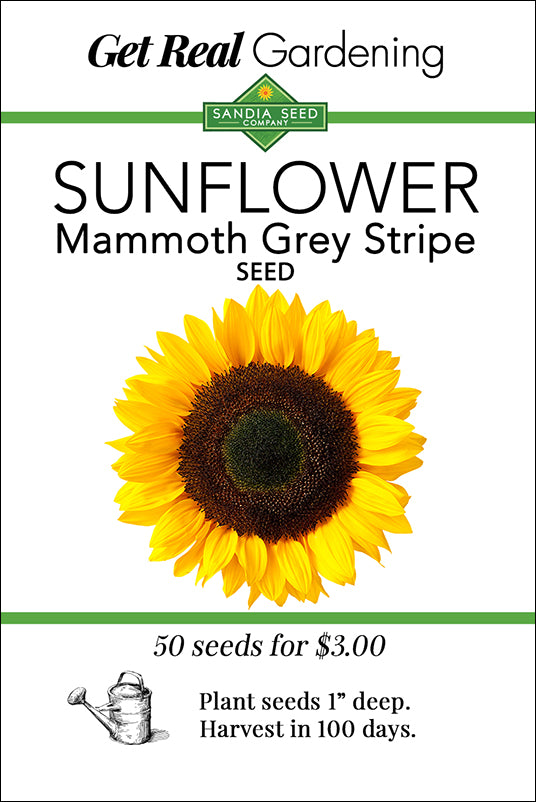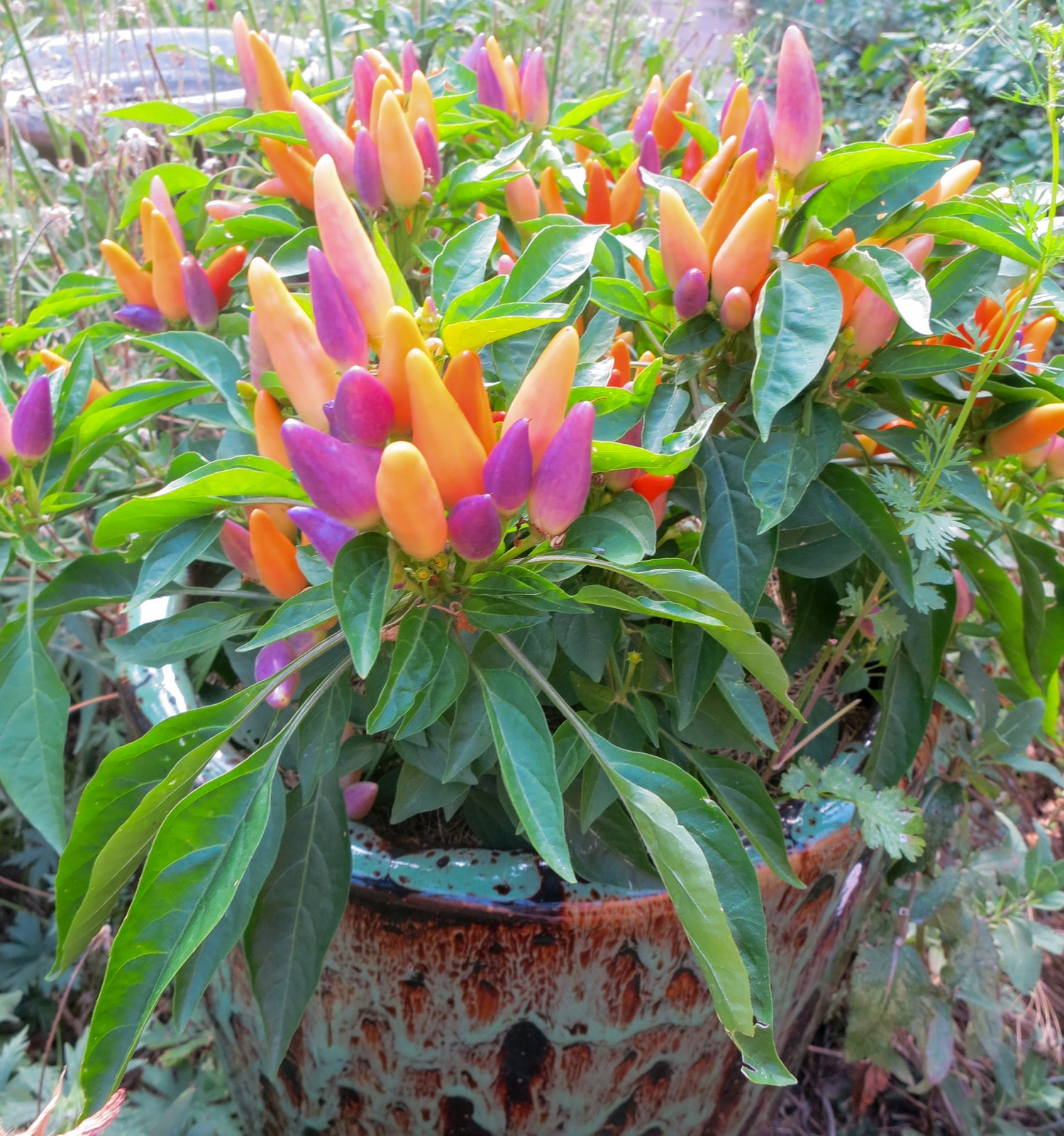Sandia Seed Company
Sunflower - Mammoth Grey Stripe Seeds
Sunflower - Mammoth Grey Stripe Seeds
Share
Couldn't load pickup availability
This mammoth Grey Striped Sunflower produces nutritious white and grey-striped seeds. The massive bright yellow blooms have feathery petals and large chocolate brown centers full of seeds. Thin-shelled, striped seeds are plump and meaty with high oil content. Plants grow 6-12' tall and produce flowers that range from 10-12″ across.
Sunflower seeds can be planted directly into the garden soil.
Sow seed directly into the garden in late spring to early summer or start seeds indoors in 4 weeks before spring frost danger has ended.
Plant seeds 1” deep and 6” apart. They should come up in 8-10 days depending on the soil temperature and grow quickly in warm weather. After the seeds sprout thin plants to at least 12" apart. First blooms appear 60-90 days after emergence.
They grow well in poor soil and will tolerate heat and dry conditions.
Each packet contains 50 Sunflower - Grey Stripe seeds. Helianthus annuus. Annual. Open-pollinated, heirloom, Non-GMO.Harvest after 100 days. $3.00
This packet plants a 25' row with 25 plants after thinning.
This item is part of the Get Real Grow Food collection. Click here for more choices.
Sunflower seeds are edible.
Eat the seeds raw, or season and roast for added flavor. There are countless benefits to adding them to your bread recipes, salads, and sandwiches. Sunflowers are known for their delicious seeds and perhaps the lesser-known fact is you can eat the entire sunflower; stalk, leaves, petals, and seeds.
Sunflowers attract pollinators and beneficial insects into your vegetable garden, improving the pollination of your fruits and vegetables. They provide a healthy source of nectar and pollen for the bees. Birds love the seeds and it's fun to watch them swing themselves upside down on the flowers to harvest the seeds. Chickens and livestock eat sunflower seeds for supplemental food in the winter.
Benefits.
Eating sunflower seeds benefits your health in many ways. They are a good source of fiber and protein, and a dozen essential vitamins and minerals, two of them being zinc and selenium. The sunflower heads follow the sun each day from east to west and cast a shadow where they grow. This shade provides an excellent opportunity to plant and grow lettuce and spinach and other plants that will bolt in the full heat of the sun. Planting sunflowers can also provide a living trellis for other crops in the garden like peas. Their stem is also strong enough to make paper and the petals and seeds have natural dying properties.



All sorts of bees and butterflies are attracted to these big flowers, they're fun to watch at just above eye level. We saw a monarch on one this summer! Perfect to grow along a fence or amongst the pumpkins and beans for a three-sisters garden. :)
Wow, these were the largest sunflowers I've grown, ours got quite tall around 9' and had a big head. We saw lots of bees and even a couple Monarchs on the blooms and later some Goldfinches were sampling the seeds so we left some of the heads on for them. We also collected and tried some of the seeds as well, and kept some of the harvest to put out in the winter feeder for the birds. An all around winner for the garden. Pretty happy blooms, and a wildlife magnet!
Recent Growing Tips & Recipes:
View all-

Best Tomatoes for Salsa - Grow from seeds!
The best tomatoes for salsa include a wide range of tomato varieties. Don't limit yourself to just one kind of tomato for your salsa! Often, fresh chopped tomato salsas like...
Best Tomatoes for Salsa - Grow from seeds!
The best tomatoes for salsa include a wide range of tomato varieties. Don't limit yourself to just one kind of tomato for your salsa! Often, fresh chopped tomato salsas like...
-

Fastest Growing Vegetables
Do you want to grow the Fastest Growing Vegetables? Here are our top suggestions for the fastest growing crops that you can start from seed: Radish – Harvest in 22+ Days!The classic Cherry...
Fastest Growing Vegetables
Do you want to grow the Fastest Growing Vegetables? Here are our top suggestions for the fastest growing crops that you can start from seed: Radish – Harvest in 22+ Days!The classic Cherry...
-

What are the best pepper seeds for beginners?
What are the best pepper seeds for beginners? Beginners should start with some of the fastest growing peppers. These peppers are great for people who are just starting to grow...
What are the best pepper seeds for beginners?
What are the best pepper seeds for beginners? Beginners should start with some of the fastest growing peppers. These peppers are great for people who are just starting to grow...

Green Chile Seeds
Sandia Seed specializes in seeds for the famous Hatch Green Chile, Poblano,...

Best Peppers for Containers
If you want to grow peppers in containers, below are our top favorite...




















